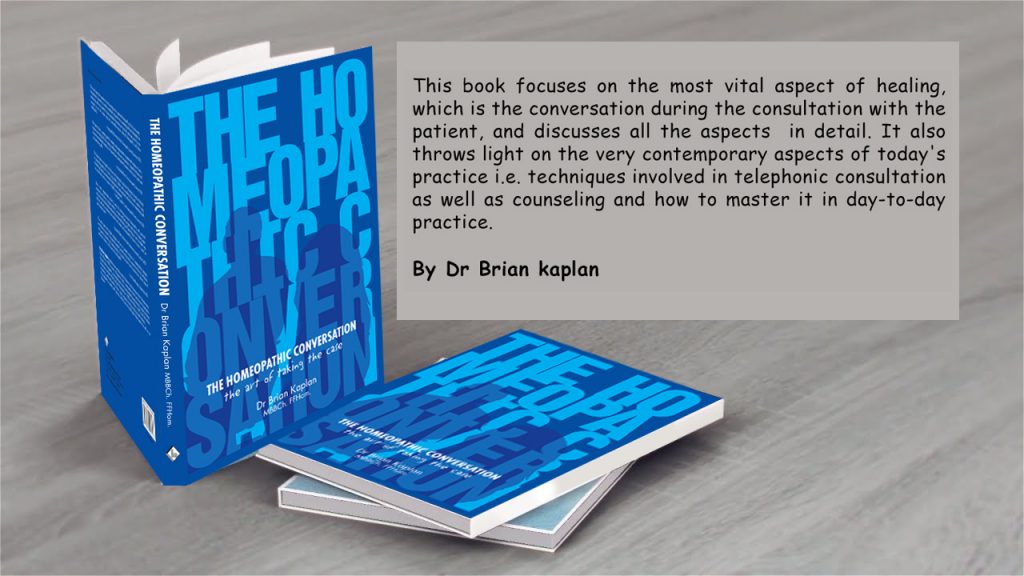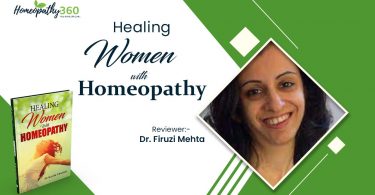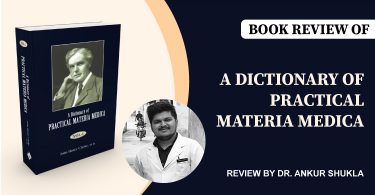
Many books in our literature inform us to do things in a better way, but only a few are so well written that they transform us completely. This book named“The Homeopathic Conversation – The art of taking the case” by Brian Kaplan and published by B. Jain Publishers belongs to this category.
Read Full Review:
“To read without reflecting is like eating without digesting” is the most frequent phrase that comes to my mind while introducing this book in different study circles. Though this book is very easy and interesting to read, the real charm is discovered when one starts reflecting on each and every concept and tries to practice them gradually in course of time. I strongly believe that it is very difficult to reduce the soul of such a book into few bullet points, but here are some of the most rewarding aspects of the book that comes to my mind-
- This book brings back the focus on the most vital aspect of healing i.e the Conversation during a consultation with the patients and discusses in detail the multiple aspects involved in it.
- The book describes the advantage of the flexible approach of case taking over the fixed questionnaires method and how to achieve the “Seamless transition” from one aspect of illness to another by an individualized pattern of questioning and conversation.
- It describes the techniques of bringing forth the homeopathic prescribing symptoms most easily and in the most reliable manner possible through this conversational method of case taking.
- This is one of the very few books that throw light on the very contemporary aspects of today’s practice i.e. techniques involved in telephonic consultation as well as counseling and how to master it in day-to-day practice.
- The author also enlightens on another very relevant and relatable aspect of the clinical practice i.e. how to deal with the research done by patient regarding his sickness through online sources and make good use of that in the case taking.
- One of the most interesting chapter in the book is the “Learning from other disciplines” wherein the author describes in a very simple language the different concepts of psychoanalysis of Sigmund Freud, Carl Jung, Wilhelm Reich, Martin Buber etc. and how these can be utilized in a homoeopathic case taking.
- Regarding counselling in practice, the author describes in the easiest terms possible about the Empathic understanding, Congruence, unconditional positive regards, effective “mirroring” etc. and how they are well placed in homoeopathic literature and methodology.
- The one chapter which deserves the highest attention and admiration is the “Techniques in the consulting room” wherein small techniques of provocation and conversation are discussed which I found personally very rewarding in practice.
- The most difficult aspect of case taking for me has always been to bring out symptoms from the neonates and small babies. In this aspect, reading and re-reading the dedicated chapter on case taking of children has been very helpful. Apart from that, it takes up another burning aspect of clinical practice i.e. how to approach a case taking of a fellow homoeopaths/allopathic doctors is also addressed which rarely get enough attention in any other book on this subject.
- Though I could not utilize much of the information provided in the chapter of Nonverbal clues, but I look forward to explore them as well as an alternative avenues of information esp. in cases where we have very few well manifested symptomatology.
Get Full Detail about Book: The Homeopathic Conversation
Book Review by Dr. Himanshu Sekhar Tiwary
Dr. Himanshu Sekhar Tiwary M.D (Hom.)NIH
Senior Medical Officer, CGHS, New Delhi, Govt. Of India.
Author- Treasure works of J.H Clarke
Therapeutics of cancer from masters of Homoeopathy.






